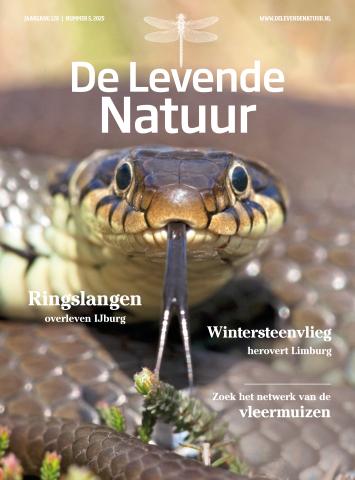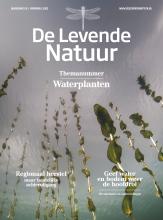De Levende Natuur nummer 5 van 2025 (English summary)
Afbeelding

Network-based research important for the preservation of bats
At the moment some species of building roosting bats are overlooked in the Netherlands, with as a consequence decreased populations and a decrease in potential roosts opportunities. We use data on the pond bat to show that 1) function of roost cannot be determined with limited number of visits to the site, 2) pond bats use on average multiple roosts during the reproductive season , 3) networks itself are used in various ways by (sub)population of pond bats and 4) distances between roosts within a network can be relatively large. The data stresses the importance of network-based research, in which roosts can be protected according to its role in a network. When the complex ecology of bat colonies is understood, mitigation measures can be deployed more effectively and with a better aim than before.
Winter stonefly recovers in Limburg
Since 2010, the nine-spined winter stonefly has been sporadically observed in the Roer but an overview of its distribution in the province of Limburg is lacking. In the winters of 2022-2023 and 2023-2024, we visited 130 locations in streams on the eastern bank of the river Meuse and performed a quick-scan to investigate its presence. Results show that nymphs were mainly found on organic matter (mosses, aquatic vegetation and terrestrial vegetation in the water) in larger streams (Roer, Geul, Swalm) with fast-flowing water and coarser sediment (sand and gravel). Other species like Potamanthus luteus, Ithytrichia lamellaris, Brachycentrus subnibulus, and Heptagenia spp showed a similar pattern over time in the Roer area as the nine-spined winter stonefly (Taeniopteryx schoenemundi) according to recordings from waarnemingen.nl (2025). The recovery of these species is probably due to a combination of water quality improvements, the presence of source-populations upstream in the catchment, and ample recovery time.

